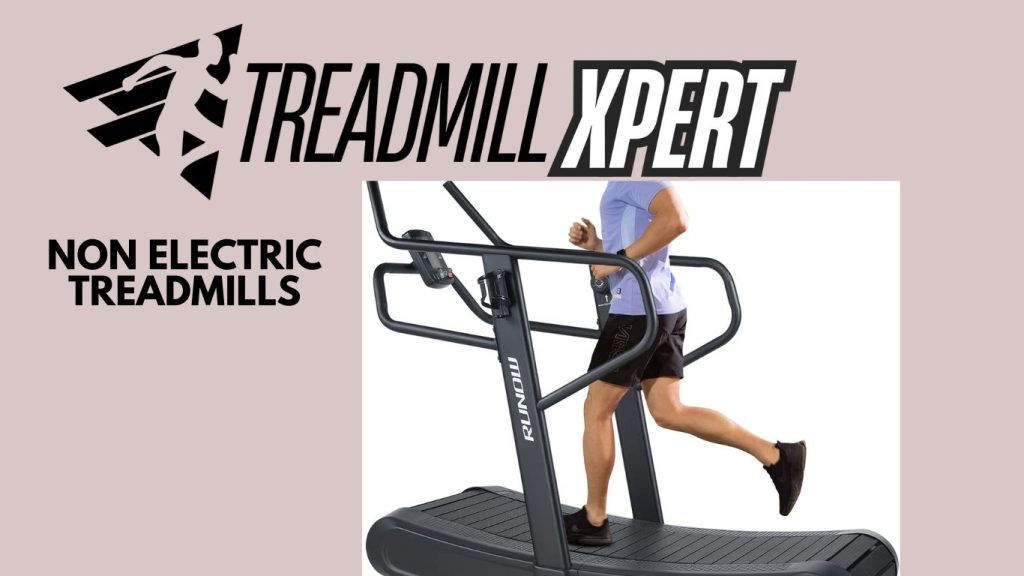What is a non-electric treadmill?
A non-electric treadmill is a piece of exercise equipment that operates without any electrical power. It is a non-electric treadmill, also known as a manual treadmill.
How does a non-electric treadmill work?
It works when you walk or run on it. The belt moves, and your body’s motion provides the power to move the belt. It typically has a slight incline to help keep the belt moving.
What are the vital features of the non-electric treadmills?
Critical features of nonelectric treadmills include no motor, being lighter and more compact than electric treadmills, being foldable for easy storage, and generally less expensive than electric models.
What are the pros of the non-electric treadmills?
The pros of a nonelectric treadmills are Lower initial cost, no electricity required, saving on power bills, Quiet operation, and a potentially more challenging workout as you set the pace.
What are the cons of non-electric treadmills?
The cons of a nonelectric treadmill are that it can be harder to maintain a consistent pace, there are Limited or no performance tracking features, and they often have a shorter belt, which can limit stride length. They may only be suitable for a moderate amount of running.

Which type of user is Best suited for electric treadmills?
It is best suited for nonelectric treadmill walking or light jogging, People looking for a simple, affordable home exercise option, and those with limited space.
What are the similarities and critical differences between electric and nonelectric treadmills?
An -electric treadmills don’t work the same as electric treadmills, but they share some similarities. Some of key differences are Belt movement, pace control, Incline, Workout intensity, and Features.
-
Belt movement:
-
Nonelectric: Only the belt moves when you walk or run, powered by your motion.
-
Electric: When you can adjust the motor, move the belt at a set speed.
-
-
Pace control:
-
Nonelectric: How fast you move. You control the pace naturally.
-
Electric: You set the pace using controls, and the machine maintains it.
-
-
Incline:
-
Nonelectric: Often have a fixed incline to help keep the belt moving.
-
Electric: Usually offers adjustable incline settings.
-
-
Workout intensity:
-
Nonelectric: This can be more challenging as you power the belt yourself.
-
Electric: Especially for longer workouts, easier to maintain a consistent pace.
-
-
Features:
-
Nonelectric: With few or no electronic features. Typically, it is fundamental.
-
Electric: Programmed workouts and performance tracking. Typically very basic.
-
Which compare the functionality of electric and non-electric treadmills?
Let’s compare the functionality of electric and nonelectric treadmills:
Electric Treadmills, Belt Movement, Speed Control, incline, Display, Program, Heart rate, maximum speed, Belt size, Cushioning, and Weight capacity.
Electric Treadmills:
-
Belt Movement: Powered by a motor for belt movement.
-
Speed Control: Adjustable via console is used to control and adjust the speed.
-
Incline: Usually motorized and adjustable incline for safety.
-
Display: The digital console showing speed, distance, time, and calories burned is displayed on the console.
-
Programs: Pre-set workout programs are often available in the console.
-
Heart Rate Monitoring: Often included via hand sensors or wireless chest straps for heart patients.
-
Maximum Speed: Generally higher, suitable for serious runners or training users.
-
Belt Size: Usually longer and broader, accommodating various stride lengths. Long types of belts are available.
-
Cushioning: Advanced shock absorption systems are often used for ease and safety.
-
Weight Capacity: Typically higher, supporting more users for weight capacity.
Nonelectric Treadmills:
-
Belt Movement: User-powered for belt movement.
-
Speed Control: Naturally controlled by the user’s pace, speed control is easy.
-
Incline: Often fixed or manually adjustable for safety.
-
Display: Basic or non-existent, sometimes a simple battery-powered display on the console.
-
Programs: Generally not available on the program or console.
-
Heart Rate Monitoring: Rarely included for tracer or monitoring.
-
Maximum Speed: Limited by user ability, but better for walking or light jogging. Adjust speed available.
-
Belt Size: Usually shorter and narrower belt sizes are enough.
-
Cushioning: Basic or minimal cushioning or relaxation.
-
Weight Capacity: Often lower than the available electric models.
What are Key Functional Differences?
Key Functional Differences Electric treadmills offer more precise control and features, while nonelectric treadmills are more straightforward and require more effort from the user.
Electric models are better for varied workouts and running, while Nonelectric treadmills are more portable and don’t require electricity.

What are familiar places and situations where nonelectric treadmills are used?
Nonelectric treadmills are typically used in various settings where simplicity, portability, or cost-effectiveness are priorities. Therefore, here are some familiar places and situations where nonelectric treadmills are used:
-
Home use:
Small apartments or homes with limited space for people who prefer essential, low-maintenance exercise equipment.
This treadmill is used where electricity may be unreliable or expensive in these areas. -
Office spaces:
While working, under-desk treadmills for walking and in small office fitness areas. -
Rehabilitation centers:
A low-impact exercise in settings where electrical equipment might be a safety concern is recommended. -
Outdoor or mobile fitness setups:
In parks or outdoor fitness areas and mobile fitness trainers who need portable equipment. -
Budget gyms:
Facilities looking to keep costs down as complementary equipment to electric treadmills. -
Schools or community centers:
Basic physical education programs are available in areas with limited budgets for fitness equipment. -
Remote locations:
Worksites or camps without reliable electricity, ships, or offshore platforms where power may be limited. -
Hotels or vacation rentals:
As a simple fitness amenity for guests where maintenance of electric equipment is challenging in locations. -
Physical therapy clinics:
For gait training and low-impact cardiovascular exercise. -
No Electricity Required:
The first benefit and advantage is the eco-friendly option, which can be used anywhere and lowers operating costs. -
Safety Features of Non-Electric Treadmills:
Use this treadmill, you can stop immediately when you stop walking/running.
No maximum speed limit—controlled by the user. -
Maintenance of Non-Electric Treadmills:
Fewer parts that can break down.
Generally lower maintenance costs.
Longer lifespan due to simpler mechanics. -
Space & Portability:
Usually more compact than electric treadmills.
Lighter and easier to move.
Many models can be folded.
